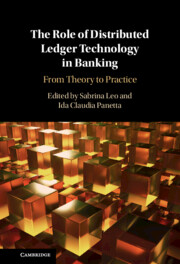Book contents
- The Role of Distributed Ledger Technology in Banking
- The Role of Distributed Ledger Technology in Banking
- Copyright page
- Dedication
- Contents
- Figures
- Tables
- Boxes
- Contributors
- Acknowledgements
- Introduction
- Part I Why Pay Attention to Distributed Ledger Technology in Banking?
- Part II Opportunities and Challenges in Crypto-Asset Regulation
- Part III The Power of Distributed Ledgers in Payments
- 6 DLT in Payments
- 7 Central Bank Digital Currency
- 8 Opportunities, Challenges, and Design of CBDCs
- 9 A Proposal for an Asia Digital Common Currency (ADCC) Applying Distributed Ledger Technology (DLT) and Blockchain Technology (BCT)
- Part IV Enabling Financial Inclusion and ESG with Distributed Ledger Technology
- Part V A Further Look at DLT in Banking: Lessons Learned, Current Applications, and Future Scenarios
- Index
- References
9 - A Proposal for an Asia Digital Common Currency (ADCC) Applying Distributed Ledger Technology (DLT) and Blockchain Technology (BCT)
from Part III - The Power of Distributed Ledgers in Payments
Published online by Cambridge University Press: 26 October 2023
- The Role of Distributed Ledger Technology in Banking
- The Role of Distributed Ledger Technology in Banking
- Copyright page
- Dedication
- Contents
- Figures
- Tables
- Boxes
- Contributors
- Acknowledgements
- Introduction
- Part I Why Pay Attention to Distributed Ledger Technology in Banking?
- Part II Opportunities and Challenges in Crypto-Asset Regulation
- Part III The Power of Distributed Ledgers in Payments
- 6 DLT in Payments
- 7 Central Bank Digital Currency
- 8 Opportunities, Challenges, and Design of CBDCs
- 9 A Proposal for an Asia Digital Common Currency (ADCC) Applying Distributed Ledger Technology (DLT) and Blockchain Technology (BCT)
- Part IV Enabling Financial Inclusion and ESG with Distributed Ledger Technology
- Part V A Further Look at DLT in Banking: Lessons Learned, Current Applications, and Future Scenarios
- Index
- References
Summary
Issuing central bank digital currencies (CBDCs) is being considered by many central banks around the world. This chapter advocates the introduction of an Asian digital common currency (ADCC) as a multilateral synthetic currency coexisting with local currencies of the region. Using DLT, the issuance of ADCC is relatively simple. We need an international organisation to support central banks. One of the main roles of the organisation would be to issue ADCC bonds. The organisation would receive government bonds from central banks and issue ADCC denominated bonds backed by the government bonds as assets. Another role of the organisation would be to provide ADCC data to central banks. This process would hence be similar to how central banks today receive physical banknotes manufactured at the printing bureau. The standardisation and interoperability should be managed by the organisation. The ADCC would then be issued by the central bank of each country as its liability backed by the ADCC denominated bonds because ADCC is not the legal tender of each central bank and distributed to the national economies through commercial banks to be used for cross-border payments as well. The ADCC would also contribute to the development of Asian financial markets.
- Type
- Chapter
- Information
- The Role of Distributed Ledger Technology in BankingFrom Theory to Practice, pp. 189 - 216Publisher: Cambridge University PressPrint publication year: 2023



